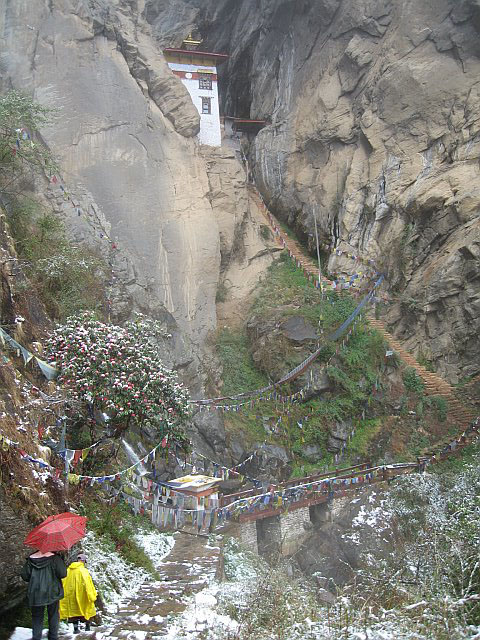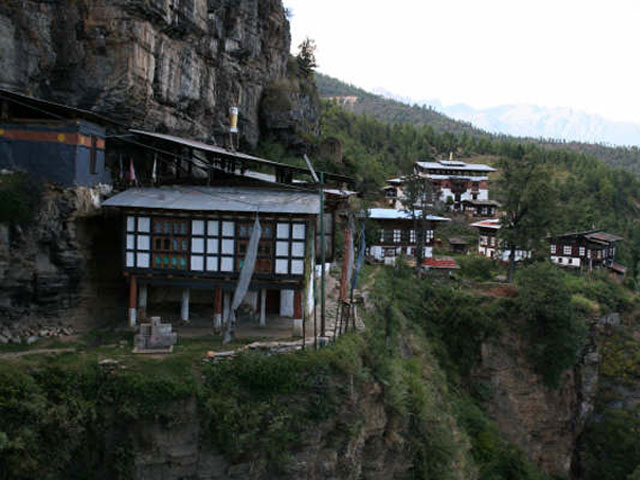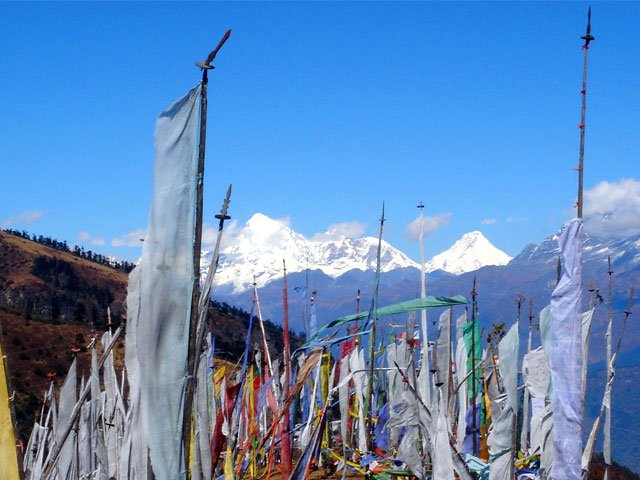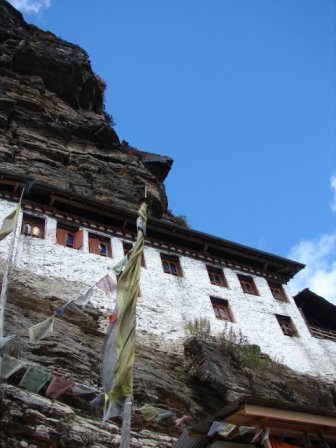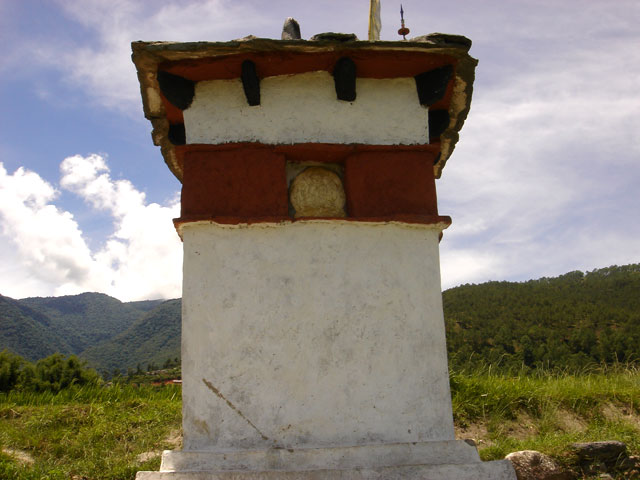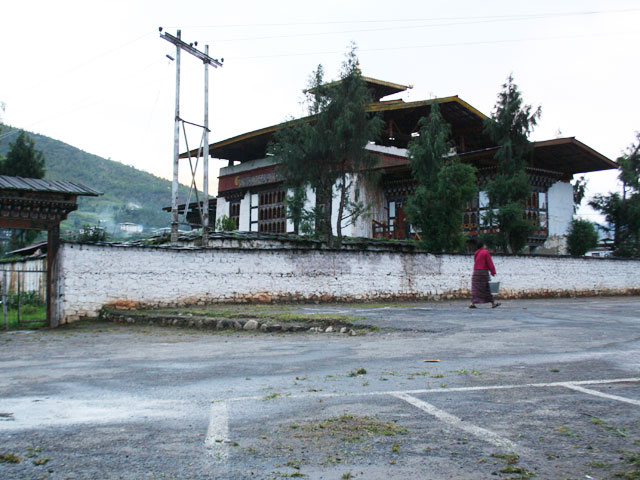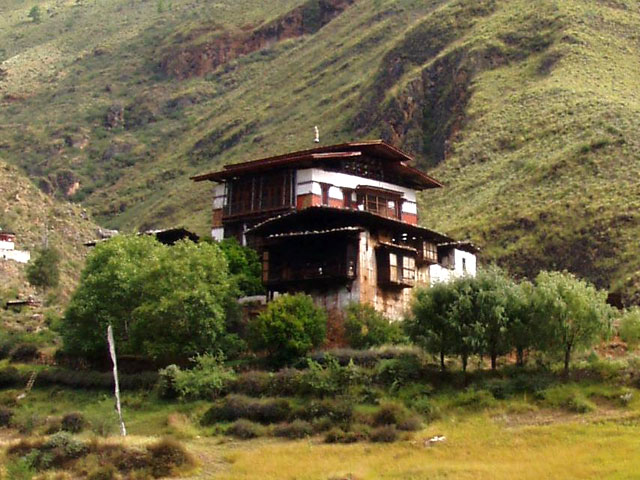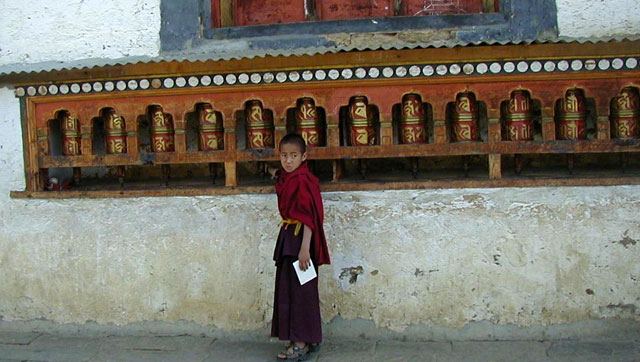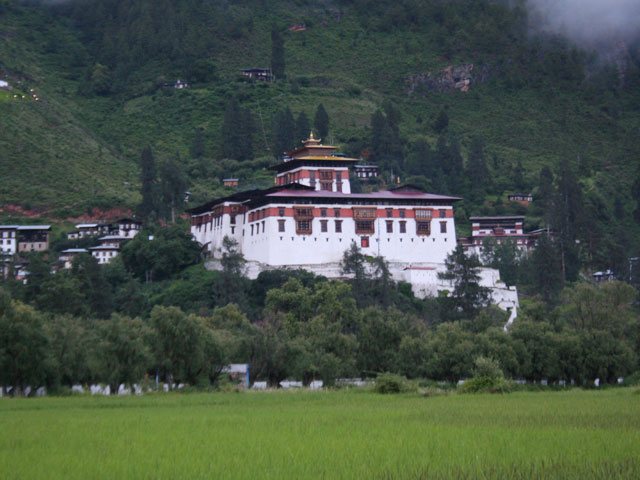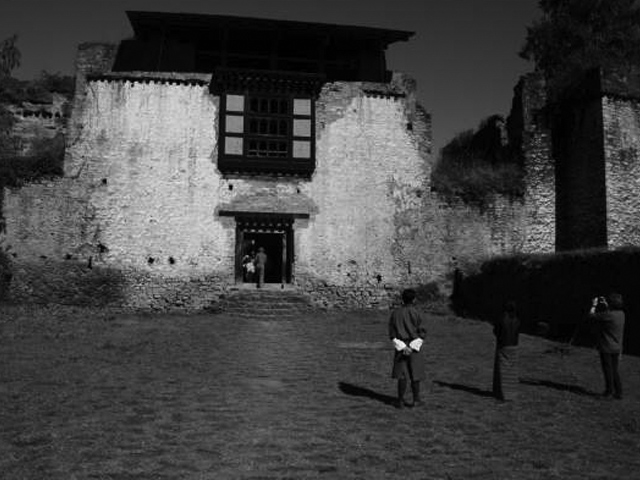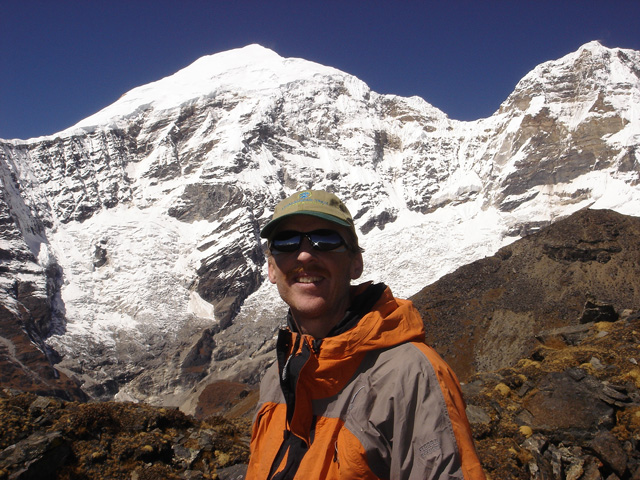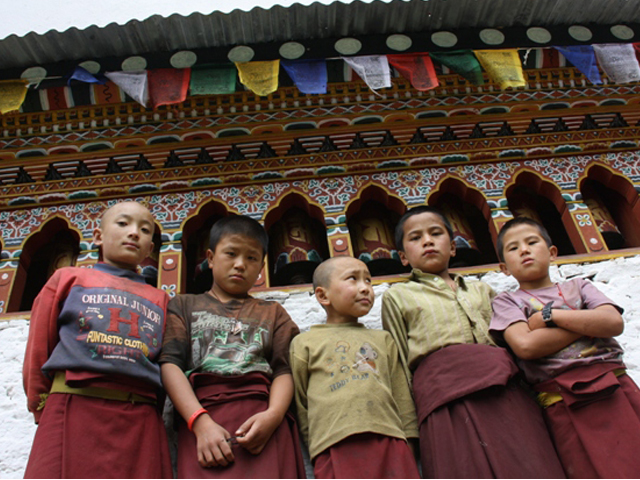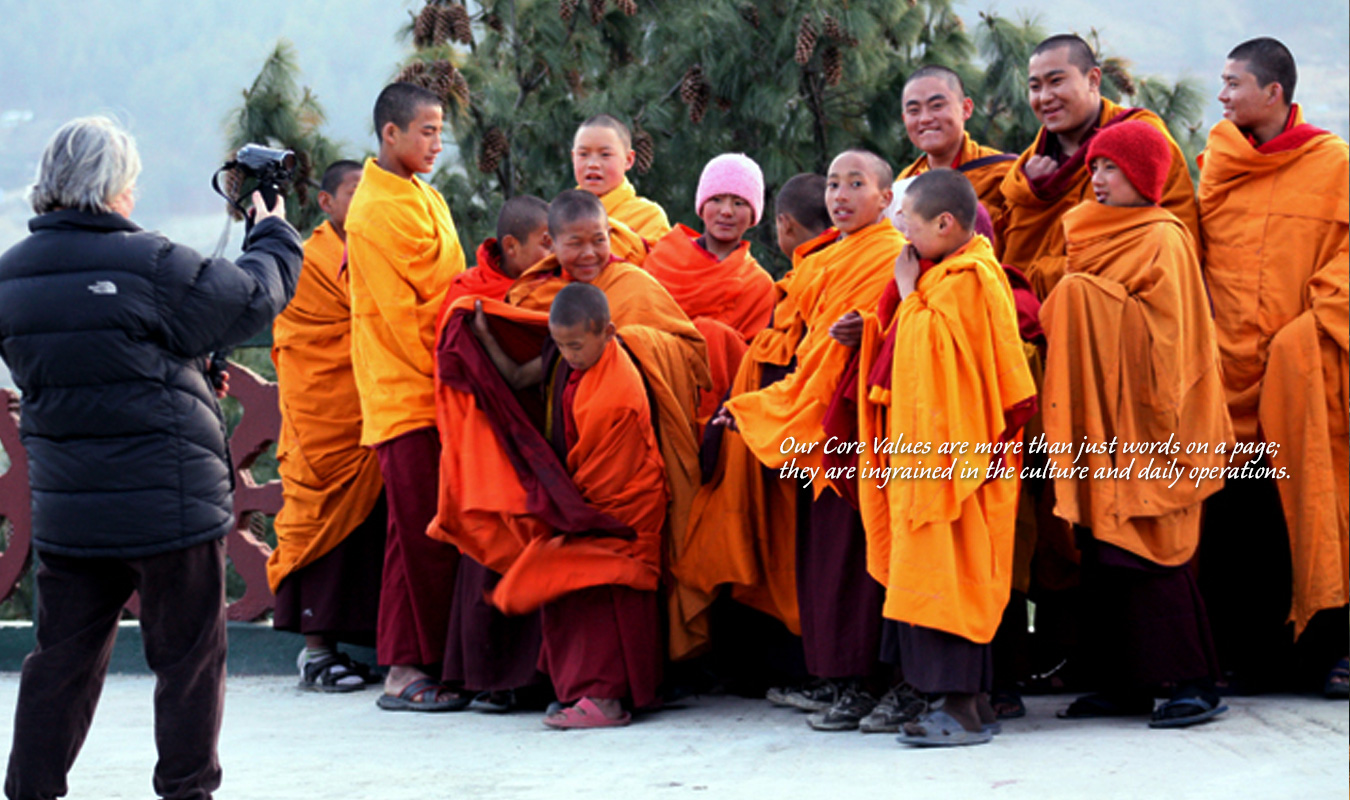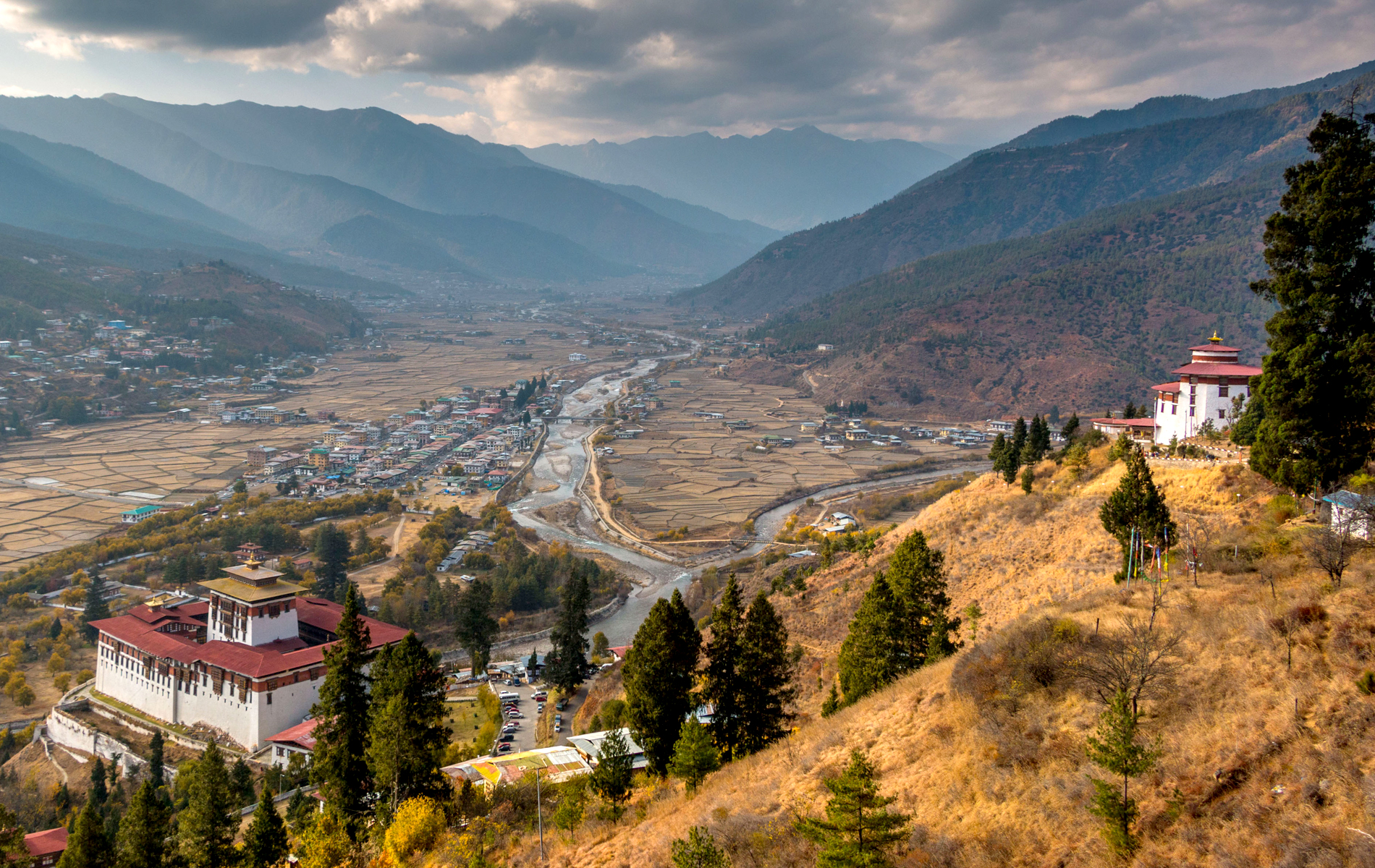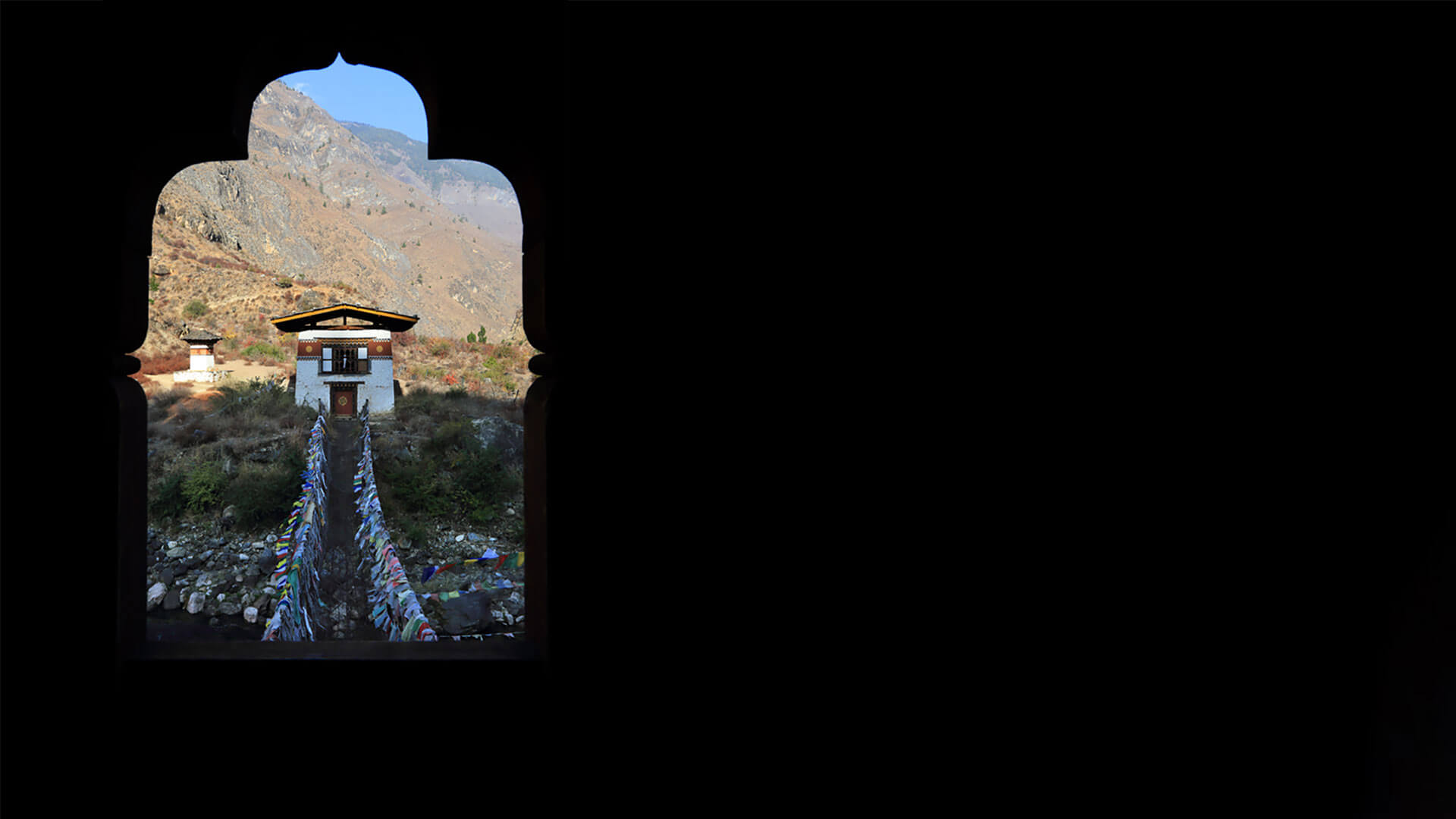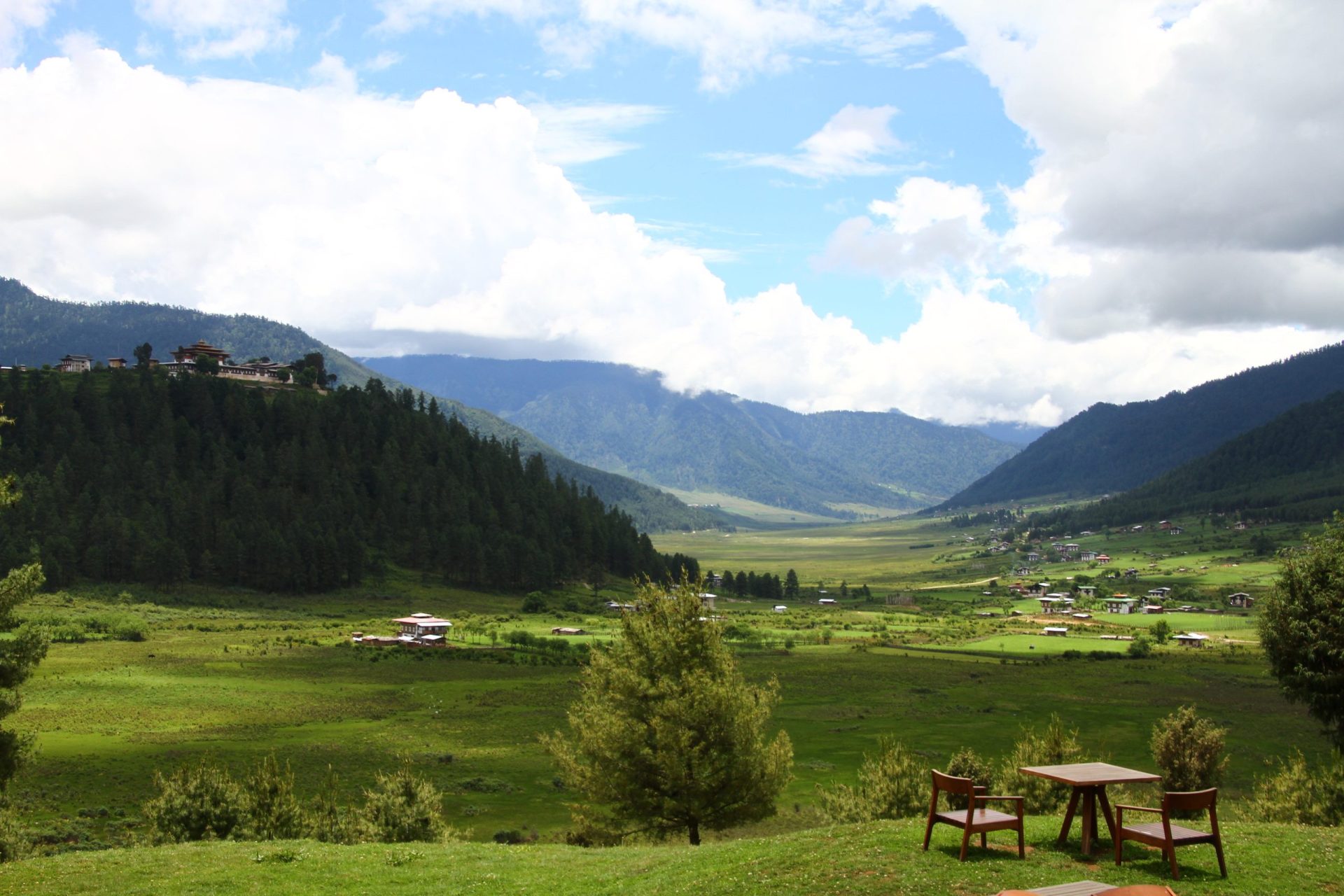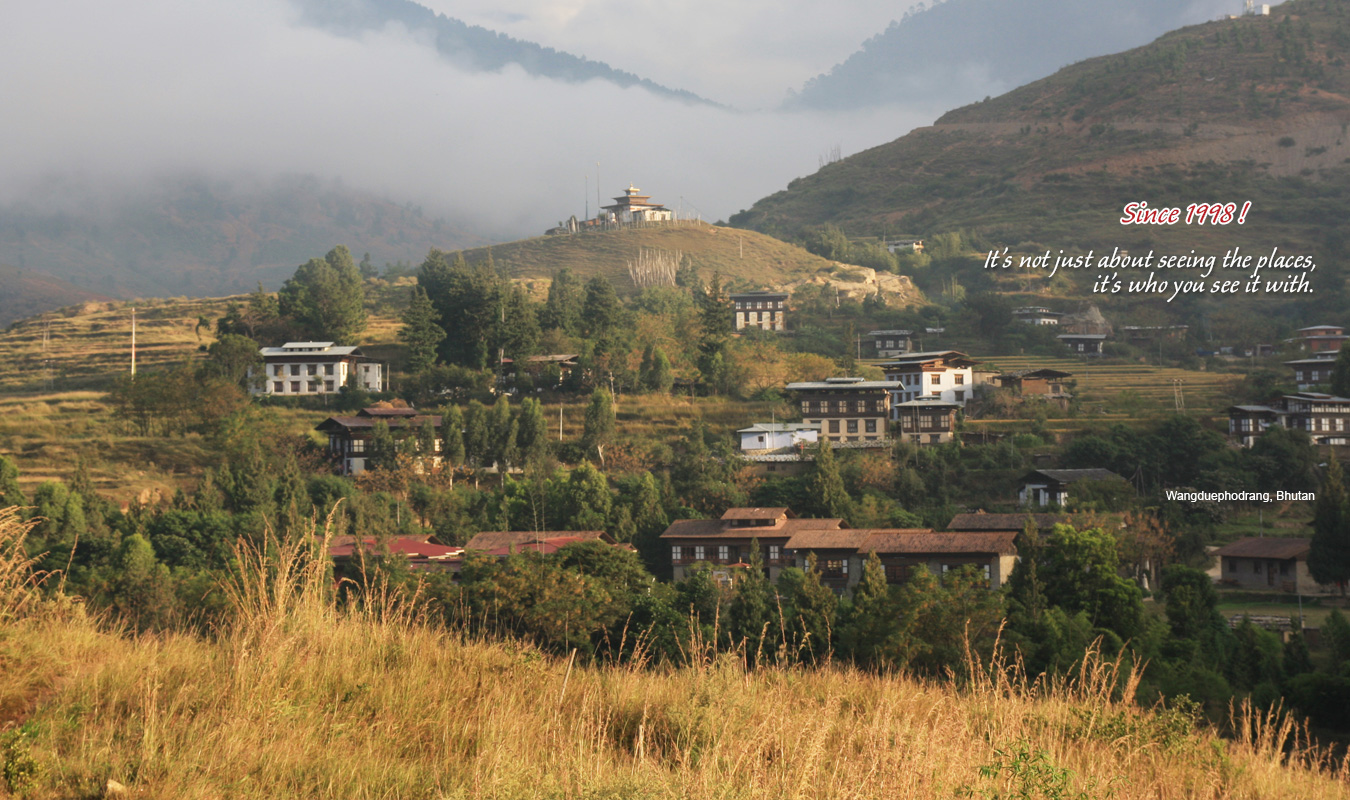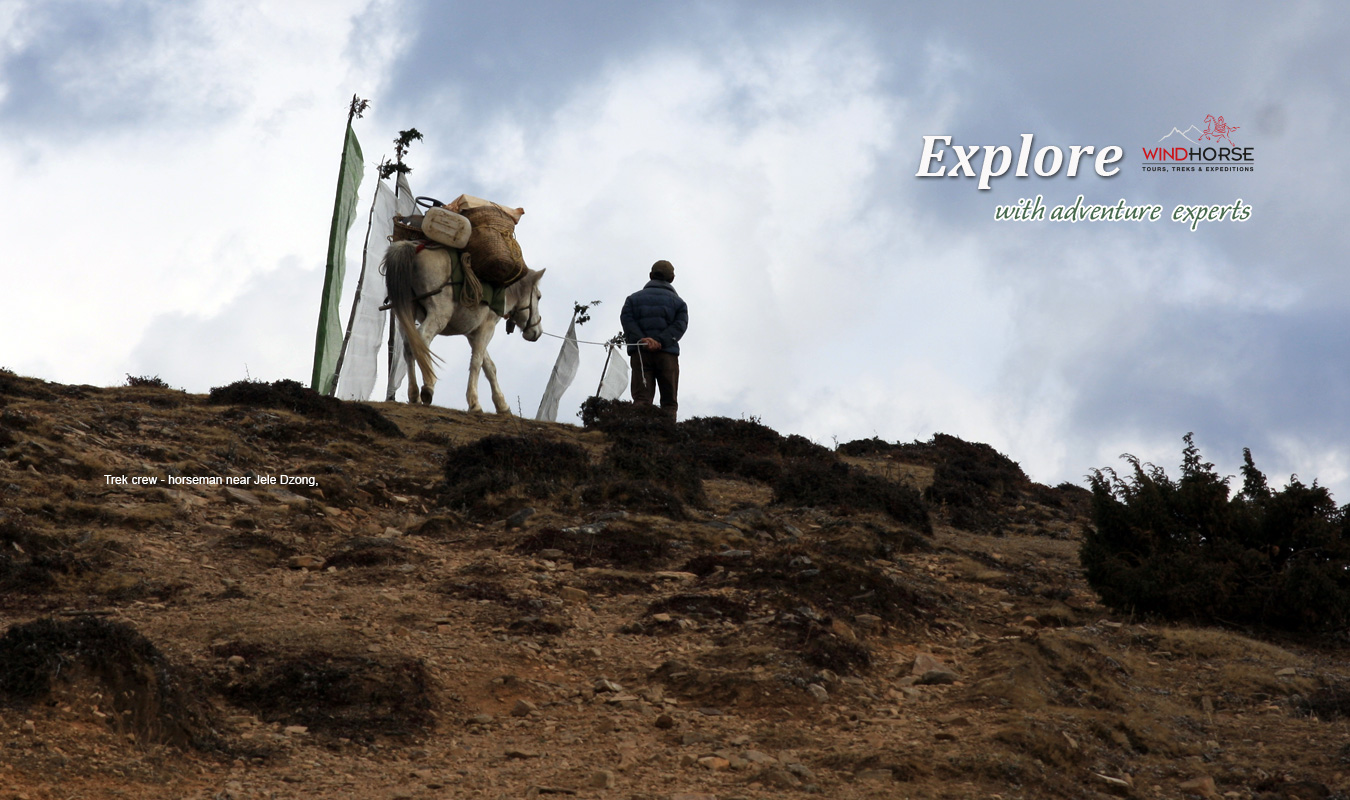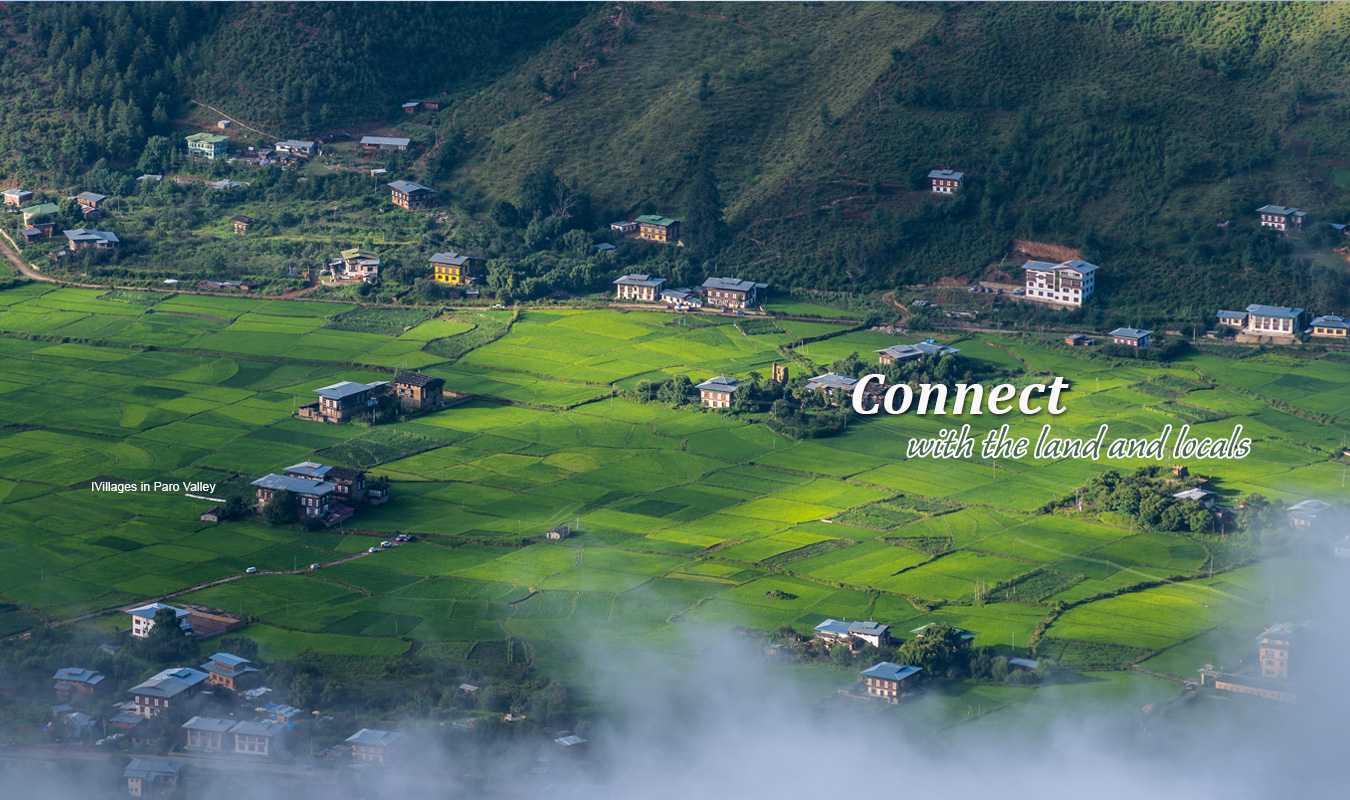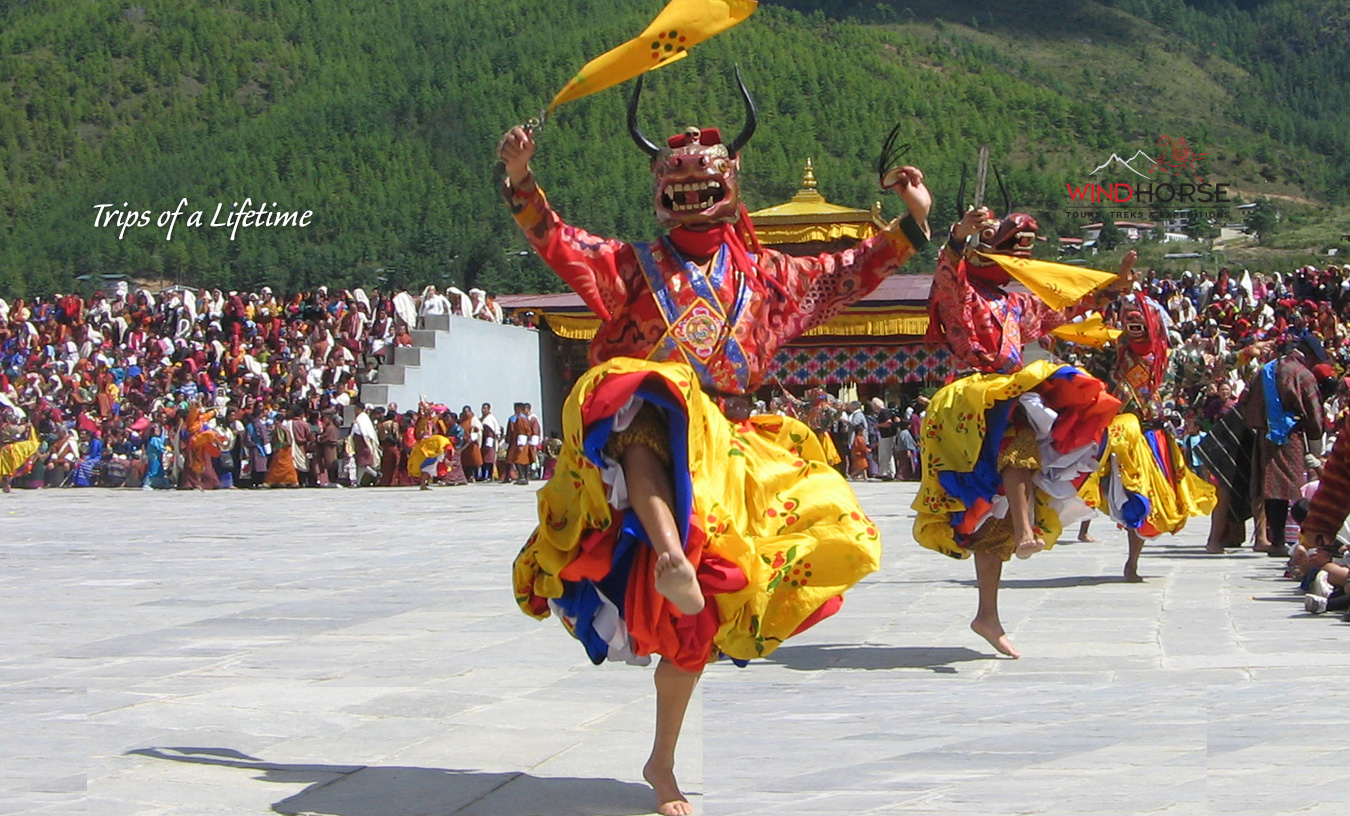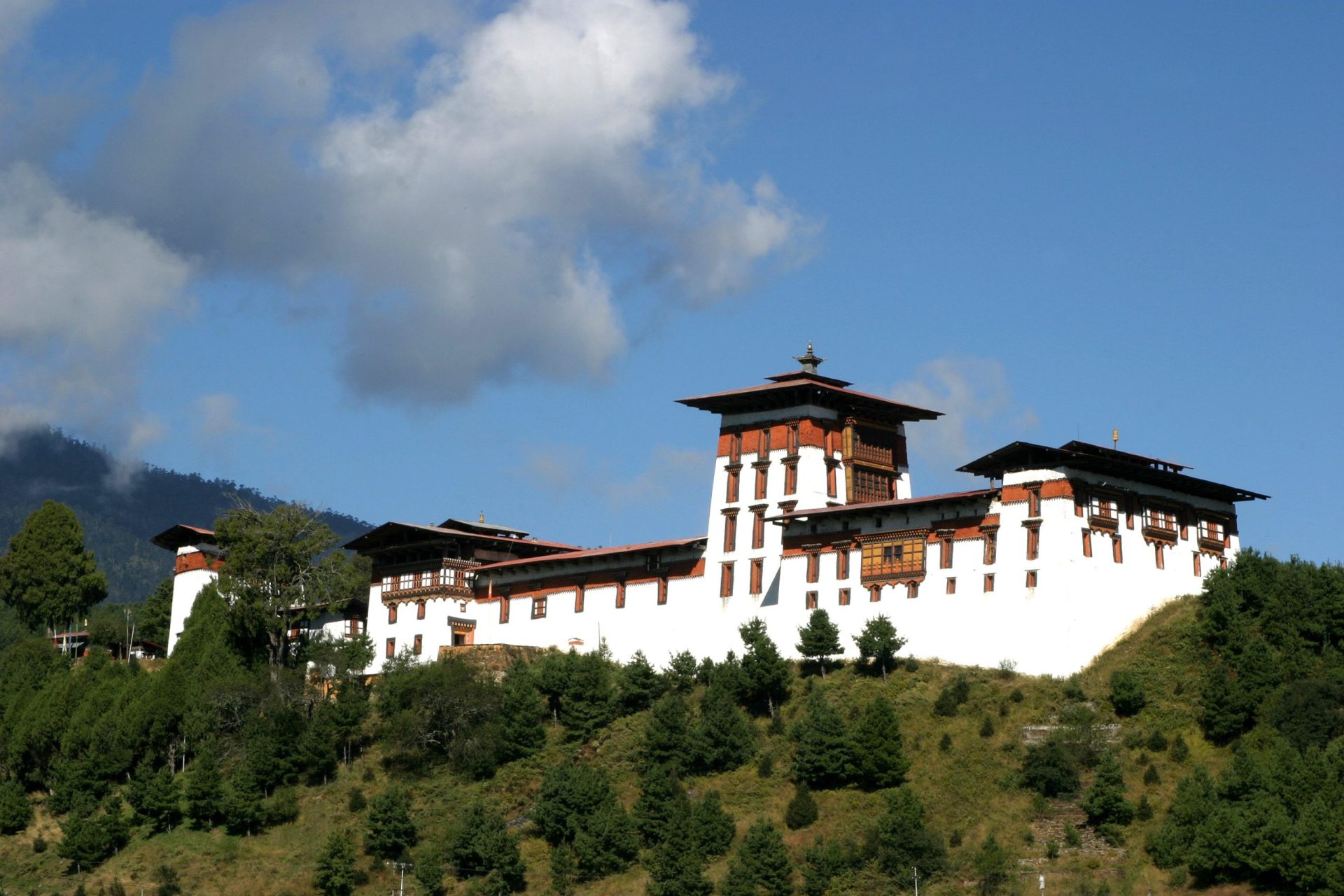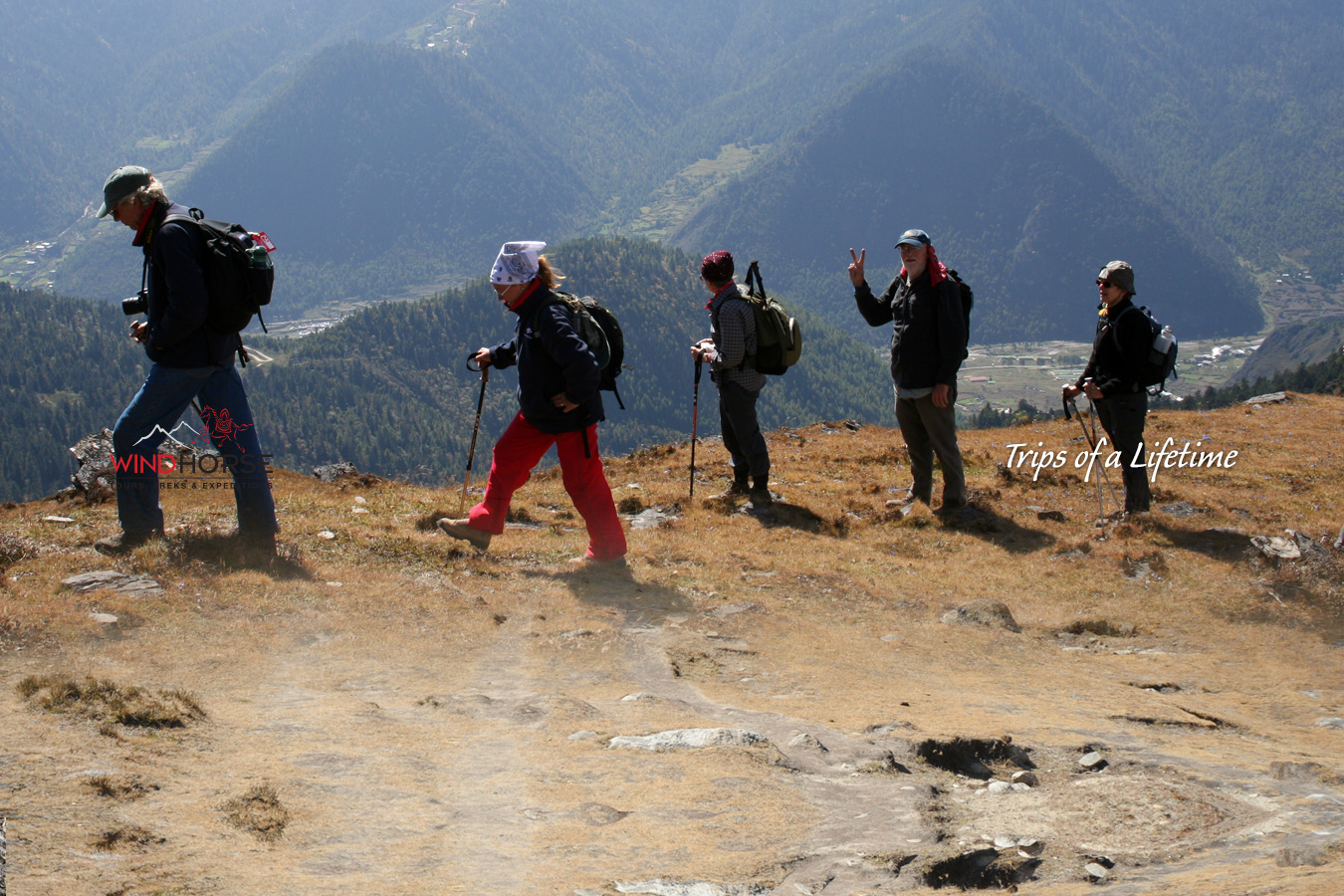Paro
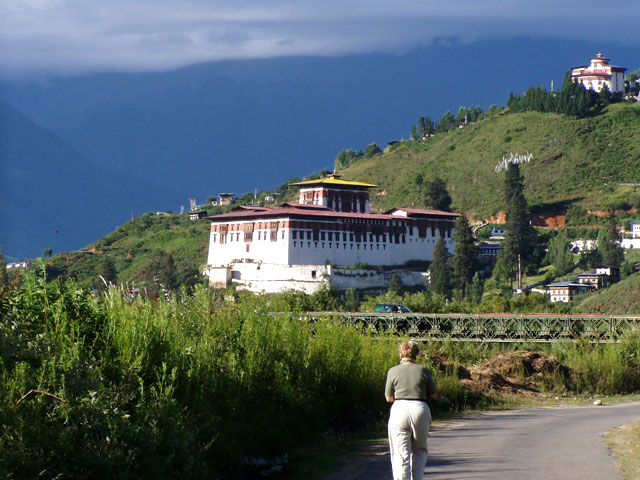
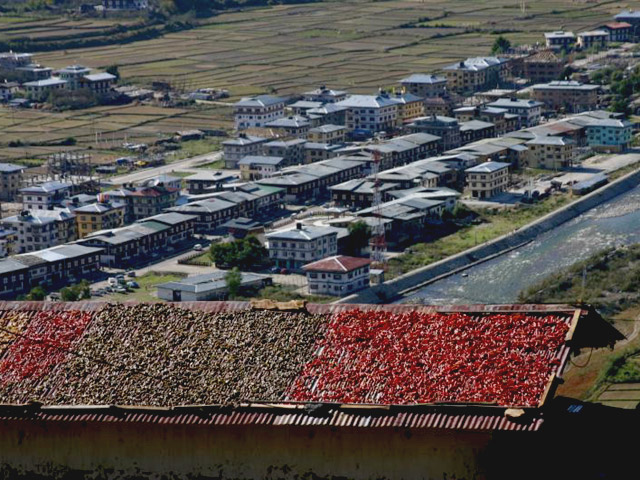
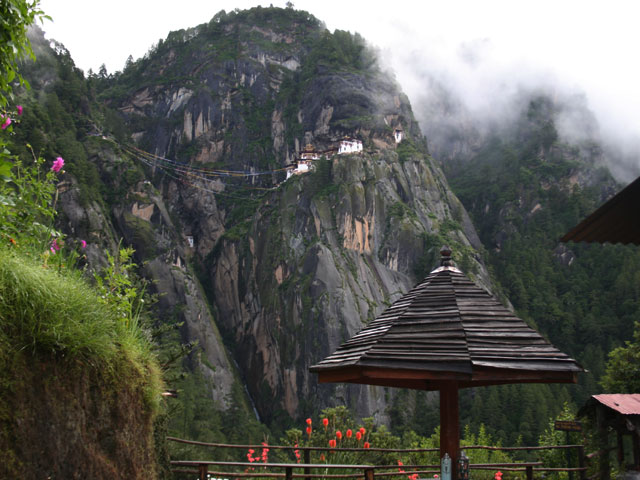
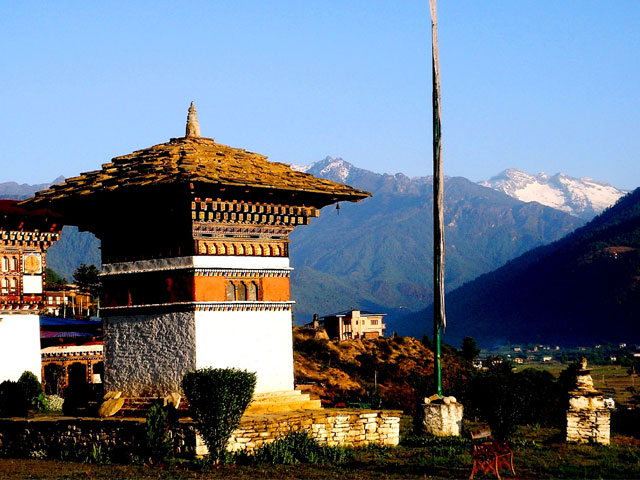
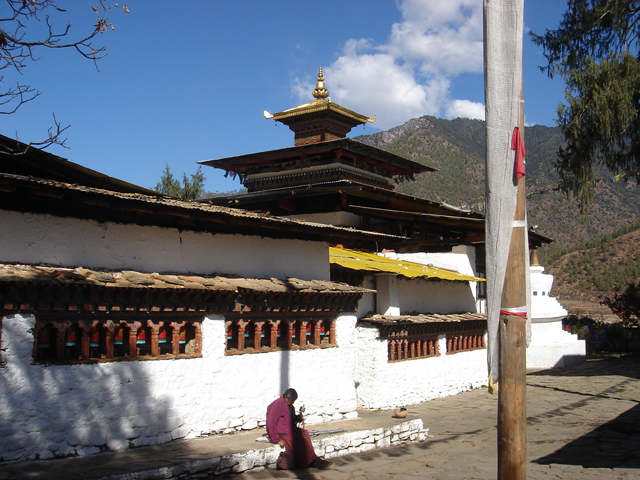
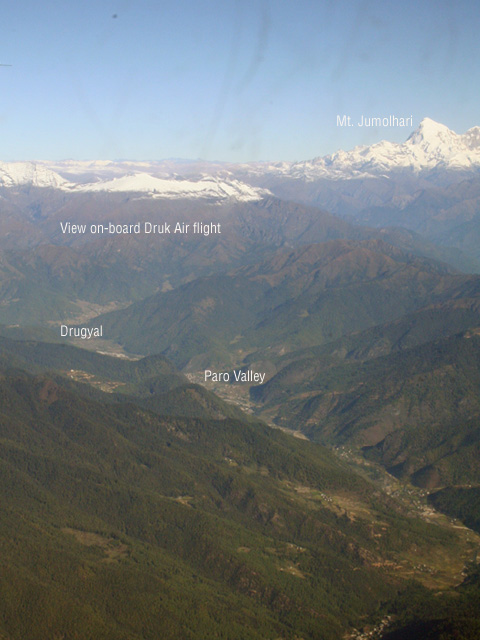
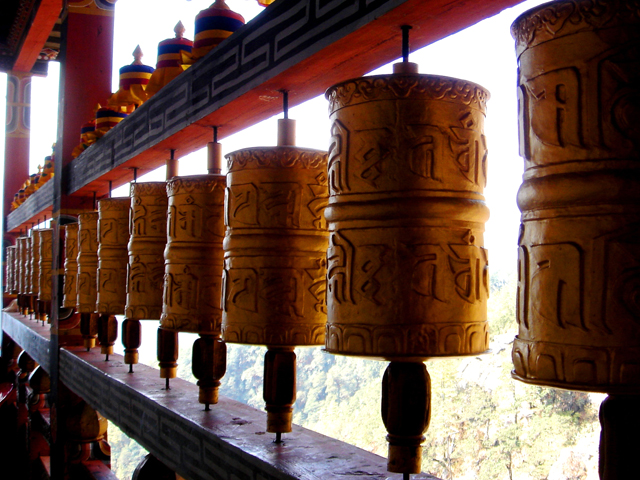
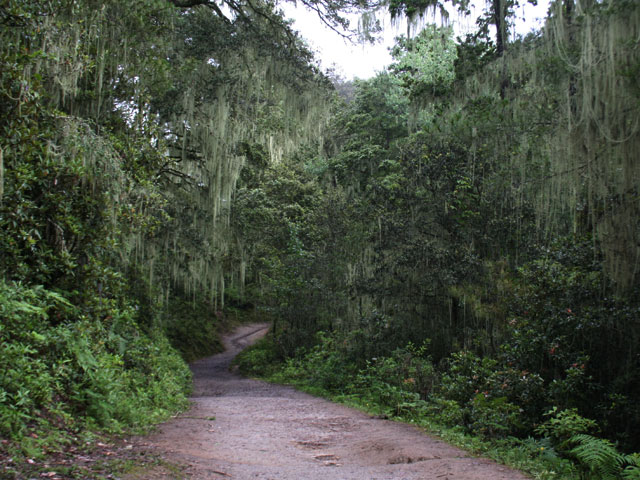
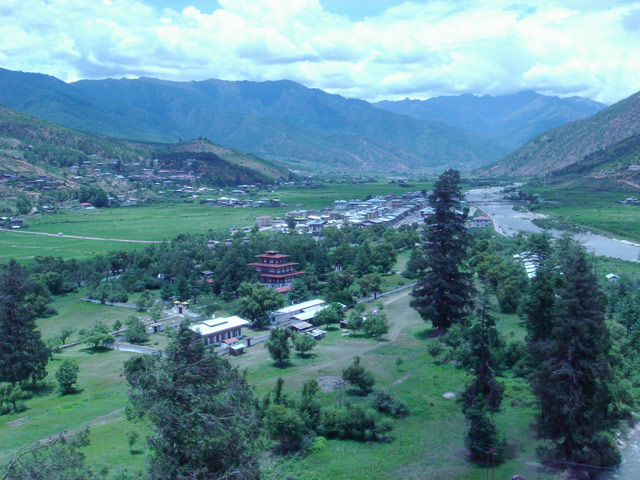
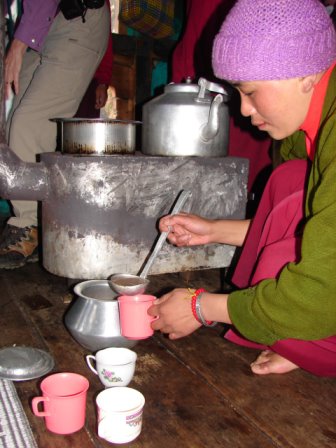
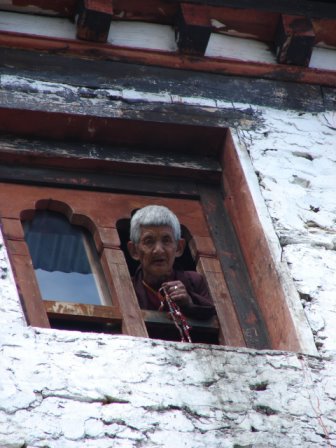
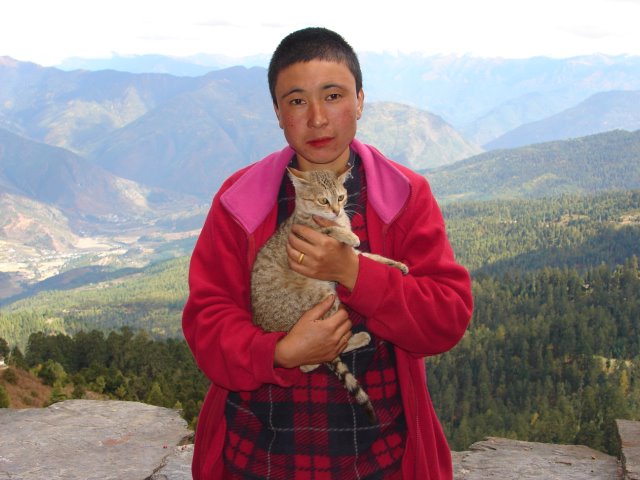
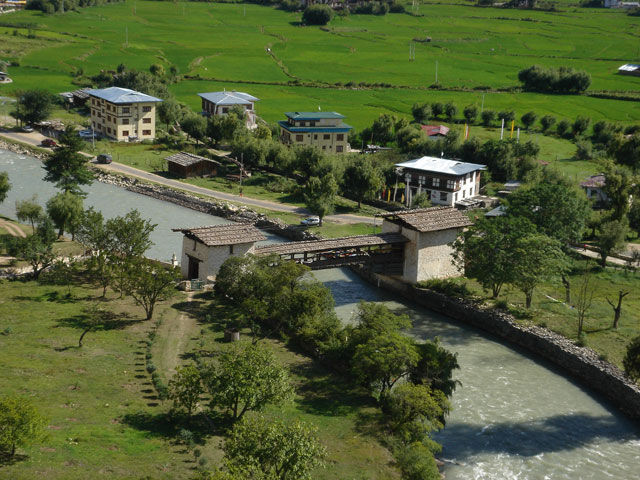
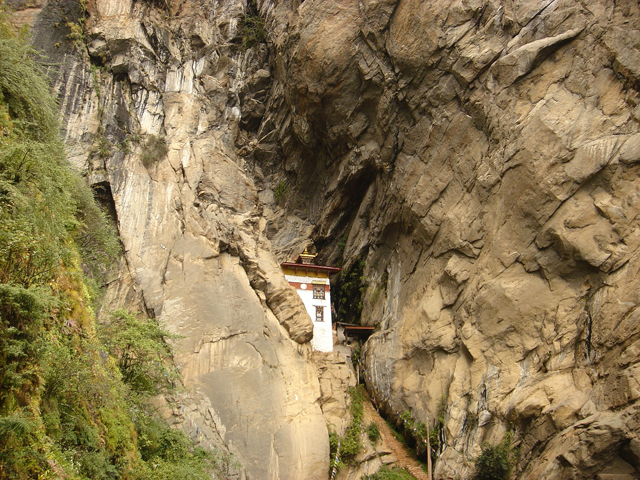
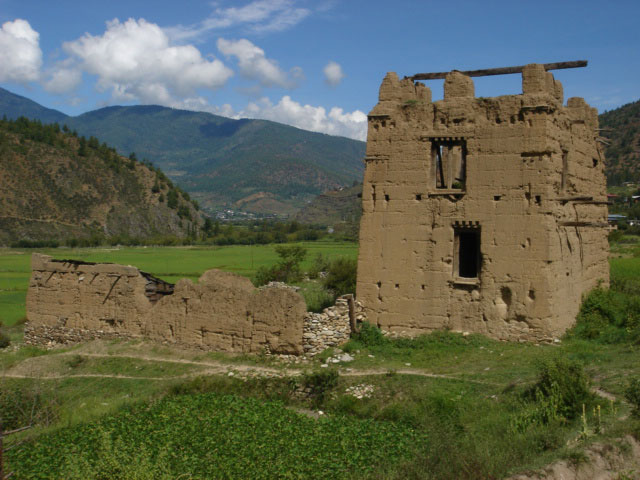

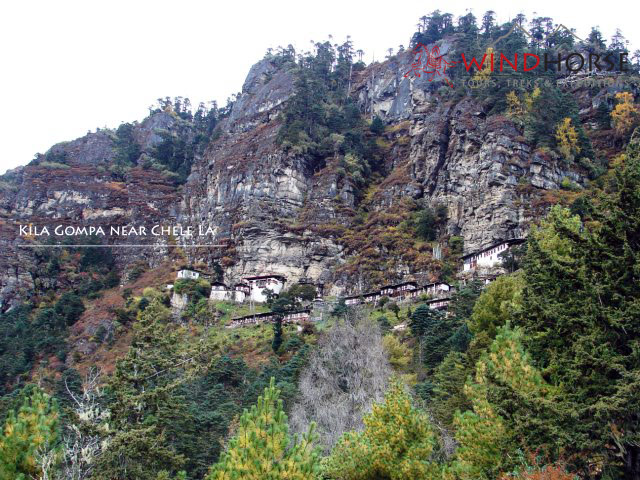
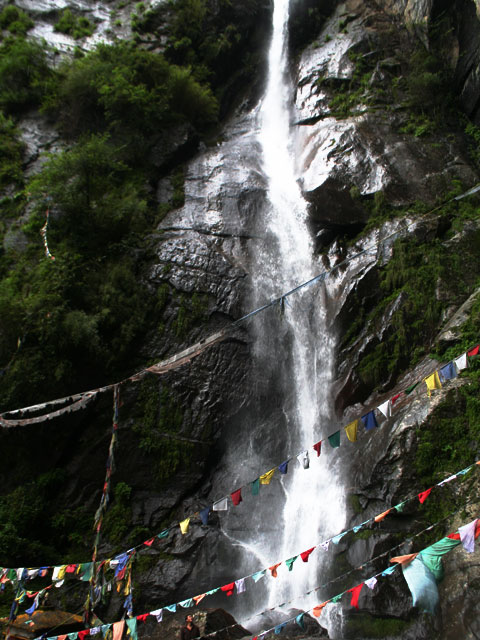
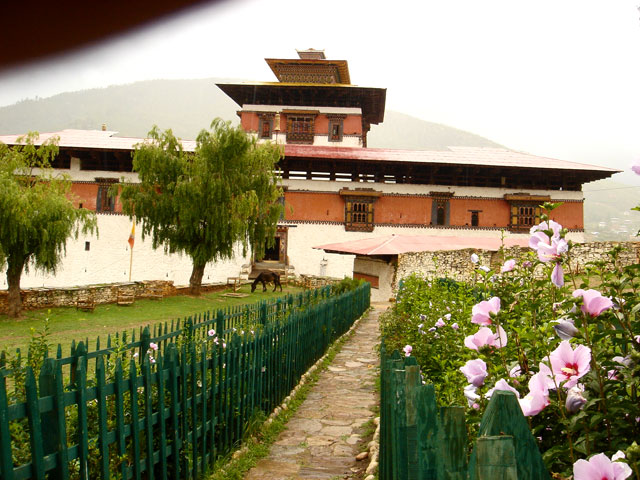

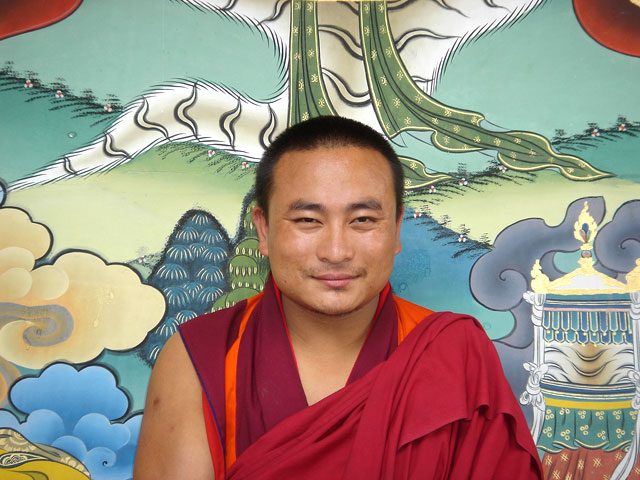





















Paro, situated at an elevation of approximately 2,200 meters (7,200 feet), serves as the administrative center of Paro District in western Bhutan. Cradled within one of the most beautiful valleys in the country, Paro is a harmonious blend of natural beauty, cultural heritage, and deep spirituality. The broad and fertile Paro Valley, nourished by the Paro Chhu River, is famed for its terraced rice fields, traditional farmhouses, and surrounding forested mountains that form a striking backdrop to this historic region.
Despite being home to Bhutan’s only international airport, Paro retains its traditional rural character and charm. The town itself, with its line of whitewashed two- and three-story buildings adorned with ornate woodwork, reflects classic Bhutanese architecture. Life here moves at an unhurried pace, and visitors often find the tranquil rhythm of the valley to be a welcome contrast to the bustle of travel.
The Paro District encompasses a number of significant cultural and religious landmarks, many of which are central to Bhutanese identity and Buddhism. Chief among them is Paro Taktsang, also known as the Tiger’s Nest Monastery, dramatically perched on a cliffside about 900 meters above the valley floor. This sacred site, built in the late 17th century around a cave where Guru Padmasambhava is said to have meditated, is one of Bhutan’s most revered pilgrimage destinations and a national symbol.
Another important religious and historical site is Rinpung Dzong (the “Fortress on a Heap of Jewels”), which overlooks the valley and the Paro Chhu River. Constructed in 1646, the dzong serves as both a monastic center and the administrative headquarters of the district. Its massive whitewashed walls and red-topped towers dominate the landscape, particularly during the annual Paro Tshechu, one of Bhutan’s most vibrant religious festivals. The nearby Nyamai Zam, a traditional cantilever bridge leading to the dzong, adds to the charm of the setting.
Just upstream lies the imposing Drukgyel Dzong, a 17th-century fortress built by Zhabdrung Ngawang Namgyel to commemorate Bhutan’s victory over Tibetan invaders. Though largely in ruins following a fire in the 1950s, it remains an important historical monument and was partially restored in recent years. On clear days, visitors can enjoy distant views of Mount Jomolhari (7,314 meters) from the surrounding area.
The district is also home to several other notable sites, including Kyichu Lhakhang, one of the oldest and most sacred temples in Bhutan. Originally built in the 7th century by Tibetan King Songtsen Gampo, it marks the introduction of Buddhism to the region and continues to be an active place of worship today.
Paro’s fertile valley produces rice, wheat, and seasonal fruits such as apples and peaches, which contribute to the district’s agrarian economy. The valley’s climate—cool in winter and pleasantly warm in summer—supports not only farming but also a growing tourism industry centered on cultural exploration, trekking, and wellness travel.
With its blend of breathtaking scenery, historic monuments, and deep-rooted spirituality, Paro stands as a gateway to Bhutan’s soul. It is often the first and last impression for travelers to the kingdom—offering a perfect balance of accessibility, tradition, and timeless tranquility.
Places /Attractions Near Paro
Paro
At an elevation of 2,200 meters, Paro serves as the administrative center of Paro District, nestled within the serene and picturesque Paro Valley. Des...
Taktsang - Tigers Nest
At an elevation of 2,200 meters, Paro serves as the administrative center of Paro District, nestled within the serene and picturesque Paro Valley. Des...
Popular Attractions:
Dzongdrakha Gompa
At an elevation of 2,200 meters, Paro serves as the administrative center of Paro District, nestled within the serene and picturesque Paro Valley. Des...
National Museum of Bhutan
At an elevation of 2,200 meters, Paro serves as the administrative center of Paro District, nestled within the serene and picturesque Paro Valley. Des...
Cheli la Pass
At an elevation of 2,200 meters, Paro serves as the administrative center of Paro District, nestled within the serene and picturesque Paro Valley. Des...
Kila Gompa Nunnery
At an elevation of 2,200 meters, Paro serves as the administrative center of Paro District, nestled within the serene and picturesque Paro Valley. Des...
Dumtseg
At an elevation of 2,200 meters, Paro serves as the administrative center of Paro District, nestled within the serene and picturesque Paro Valley. Des...
Druk Choeding Lhakhang
At an elevation of 2,200 meters, Paro serves as the administrative center of Paro District, nestled within the serene and picturesque Paro Valley. Des...
Road from Paro to Thimphu
At an elevation of 2,200 meters, Paro serves as the administrative center of Paro District, nestled within the serene and picturesque Paro Valley. Des...
Kyichu Lhakhang
At an elevation of 2,200 meters, Paro serves as the administrative center of Paro District, nestled within the serene and picturesque Paro Valley. Des...
Paro Rinpung Dzong
At an elevation of 2,200 meters, Paro serves as the administrative center of Paro District, nestled within the serene and picturesque Paro Valley. Des...
Drukgyel Dzong
At an elevation of 2,200 meters, Paro serves as the administrative center of Paro District, nestled within the serene and picturesque Paro Valley. Des...
Jomolhari Trek
At an elevation of 2,200 meters, Paro serves as the administrative center of Paro District, nestled within the serene and picturesque Paro Valley. Des...
Drive from Paro to Haa
At an elevation of 2,200 meters, Paro serves as the administrative center of Paro District, nestled within the serene and picturesque Paro Valley. Des...
Road from Paro to Punakha
At an elevation of 2,200 meters, Paro serves as the administrative center of Paro District, nestled within the serene and picturesque Paro Valley. Des...
Flight to Paro
At an elevation of 2,200 meters, Paro serves as the administrative center of Paro District, nestled within the serene and picturesque Paro Valley. Des...
Arrival in Paro Airport
At an elevation of 2,200 meters, Paro serves as the administrative center of Paro District, nestled within the serene and picturesque Paro Valley. Des...
Ugyen Pelri Thang Palace
At an elevation of 2,200 meters, Paro serves as the administrative center of Paro District, nestled within the serene and picturesque Paro Valley. Des...
Paro Weekend Market
At an elevation of 2,200 meters, Paro serves as the administrative center of Paro District, nestled within the serene and picturesque Paro Valley. Des...
Bitekha Dzong
At an elevation of 2,200 meters, Paro serves as the administrative center of Paro District, nestled within the serene and picturesque Paro Valley. Des...
Chhoten Lhakhang
At an elevation of 2,200 meters, Paro serves as the administrative center of Paro District, nestled within the serene and picturesque Paro Valley. Des...
Tachog Lhakhang
At an elevation of 2,200 meters, Paro serves as the administrative center of Paro District, nestled within the serene and picturesque Paro Valley. Des...
Chumphu Ney
At an elevation of 2,200 meters, Paro serves as the administrative center of Paro District, nestled within the serene and picturesque Paro Valley. Des...
Bumdrak
At an elevation of 2,200 meters, Paro serves as the administrative center of Paro District, nestled within the serene and picturesque Paro Valley. Des...
Popular Attractions:
Jela Dzong
At an elevation of 2,200 meters, Paro serves as the administrative center of Paro District, nestled within the serene and picturesque Paro Valley. Des...
Druk Path Trek
At an elevation of 2,200 meters, Paro serves as the administrative center of Paro District, nestled within the serene and picturesque Paro Valley. Des...


 +1 612 869 4949
+1 612 869 4949
